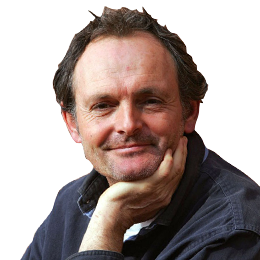HEADING FOR THE HILLS
MARTIN KIRBY
They are legend
Drift east along our sleepy lane, away from the patchwork farms, lush gardens radiating from the village, towards the brooding pine forest and tooth of limestone that is La Mola Mountain. It is a timely thing to do.
I'm going there now, flowers in hand, words in my head. It is late afternoon, the heat pricking my back, weighing my feet. It is peaceful, but not quiet, for echoes abound.
How must it have been, living rough, so far from home, uncertain of survival? I am thinking of American Delmer Berg who died this February aged 100. He was here, among the many, a survivor, now the last to die.
I never met him, but wish that I had. His passing is the toiling of a mighty bell, for there are no more voices to tell first hand of Chabola Valley, of that moment in time when the last of the volunteers from more than 50 countries who had re-grouped after the terrible retreat from Aragon, camped, trained and somehow steeled themselves again, right here, for one last bloody endeavour across the Ebre river to stop Franco.
And as I wander in and out of shadows I am also thinking of those members of the International Brigades that I had met – Milton Wolff and Clarence Kailin. Abraham Lincoln commander Milton died aged 92. Clarence soldiered on until he was 95, both indefatigable to the end. My good friend fellow writer and historian Angela Jackson, whose words you may have read in Catalonia Today, can testify.
I am heading to Clarence's grave and that of another American, 500 metres from my home. They are not in a cemetery, but deep in the valley where he once camped, cocooned by the trees and cane, Clarence's dying wish fulfilled. Place my ashes beside my dear friend John Cookson, he told his family, and so they did. John and Clarence came from their homes in Wisconsin, America, in 1936, two among the 2800 Americans who fought for the Republic.
John Cookson was a star student of physics, bound to make his mark on the world. In a twist of fate he has. He died on September 11th of all days, 1938. And I believe his is the only known grave of all the Americans killed fighting for the Republic. Nearly a quarter of the American volunteers died. Of the 2500 British men and women, 526 were killed.
So here it is, in the shadow of a pine, a place that symbolises so much, one small part of the complex history that must faced. Eighty years on from the start of the Spanish civil war it is absolutely right and fitting that the case be made for Catalonia to establish the first major museum of the epochal conflict, to ensure lasting understanding that Spain desperately needs. A balanced, comprehensive and objective centre of learning and remembrance is long overdue. And within it John's and the brigaders' story will live on.
As La Pasionaria, Dolores Ibárruri, told the survivors of the international brigades as they were withdrawn from Spain in late 1938: “You can go with pride. You are history. You are legend. You are the heroic example of the solidarity and the universality of democracy.”


